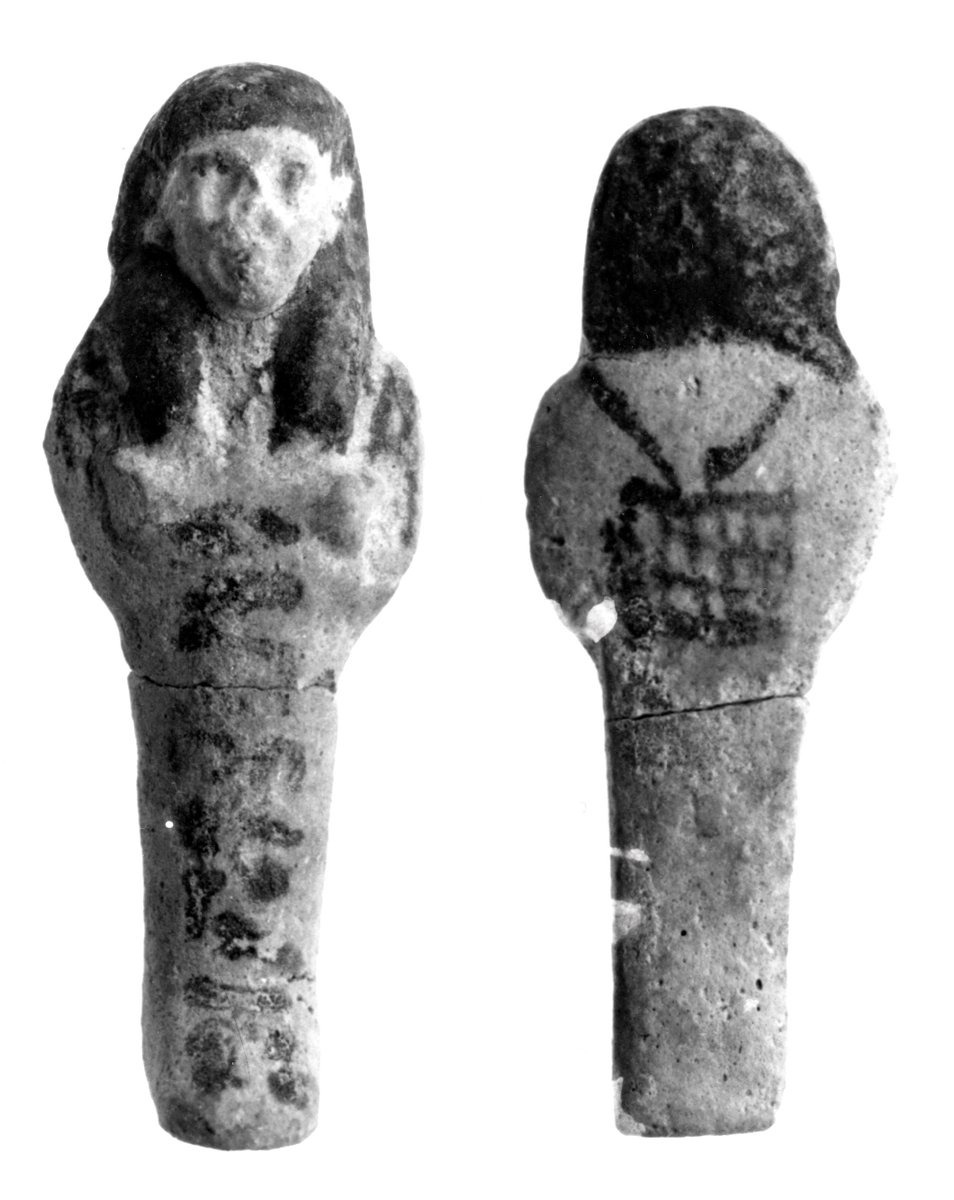
Shabti
Egyptian Art
| Place of production | Egypt |
|---|---|
| Date | 6th-3rd centuries B.C. |
| Object type | tomb equipment |
| Medium, technique | Terracotta, paint |
| Dimensions | 105 × 30 × 8.9 cm |
| Inventory number | 66.1-E |
| Collection | Egyptian Art |
| On view | Museum of Fine Arts, Basement Floor, Ancient Egypt, Funerary beliefs |
Pottery coffins appeared for the first time around the unification in the form of oval or rectangular boxes, mainly with undecorated lids. The corpses were laid in on their sides in a foetal position. Terracotta coffins became considerably widespread in the New Kingdom, initially in long cylindrical or anthropomorphic form with the decoration of the face and the arms in relief.
The present lid of a terracotta infant-coffin is an example of the Late Period group with white background and polychrome painting. On the schematic anthropoid form, the ears, nose, eyes, and eyebrows were moulded separately. The material of the coffin is rough Nile silt with straw and sand temper, strengthened by an even more roughly tempered clay layer on the interior. Polychrome decoration of blue, yellow, and red paintings on a white base covers the entire outer surface. The colouring fits well into the symbolism of colours representing the deification of the dead, which was generally used on Egyptian coffins.
Below the collar the figure of the goddess Nut can be observed, with outstretched wings and an oversized sun disc above her head, holding maat¬-feathers in her hands. Below this scene, the vignette of Chapter 151 of the Book of the Dead appears: Anubis in the embalming tent, bending over the funerary bed supporting the mummy. This scene initiates the funerary text running in two columns to the feet.
The iconography of this piece follows the classical tradition of the Saite coffin decoration. Certain elements such as the large sun disc represented entirely below the wesekh-collar, or the double articulation of the wings of Nut, date the coffin to the later parts of the Late Period or the beginning of the Ptolemaic era.
This record is subject to revision due to ongoing research.